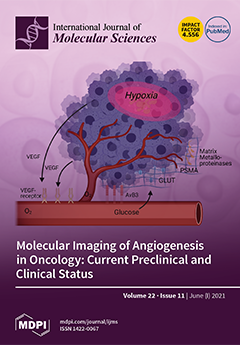The influence of
PVT1 and
MALAT1 variants on colorectal cancer (CRC) susceptibility and their impact on
PVT1/
miRNA-186/epithelial-mesenchymal transition (EMT) and
MALAT1/
miRNA-101/EMT axes in CRC are unknown. We investigated the influence of
PVT1 rs13255292 and
MALAT1 rs3200401 on the risk of CRC and adenomatous polyps (AP), their impact on the long noncoding RNAs
PVT1 and
MALAT1 expression and their target
miRNA-186,
miRNA-101/E-cadherin pathways, along with their potential as early CRC biomarkers. Overall, 280 individuals were recruited: 140 patients with CRC, 40 patients with AP, and 100 healthy volunteers. Genotyping and serum expression profiles were assessed using qPCR. The EMT biomarker, E-cadherin, was measured by ELISA.
rs3200401 was associated with increased CRC risk, whereas
rs13255292 was protective. Serum
PVT1 and
MALAT1 were upregulated in CRC and AP patients versus healthy controls, whereas,
miRNA-186,
miRNA-101 and E-cadherin were downregulated in CRC versus non-CRC groups.
MALAT1 showed superior diagnostic potential for CRC and predicted CRC risk among non-CRC groups in the multivariate logistic analysis.
PVT1,
MALAT1,
miRNA-186 and
miRNA-101 levels were correlated with E-cadherin, tumor stage, lymph node and distant metastasis. E-cadherin was lost in metastatic vs. non-metastatic CRC.
rs3200401CC genotype carriers showed higher E-cadherin levels than
CC + CT carriers.
rs3200401 was correlated with lymph node status. For the first time,
rs13255292 and
rs3200401 are potential genetic CRC predisposition markers, with
rs3200401 possibly impacting the EMT process. Serum
PVT1,
MALAT1,
miRNA-186 and
miRNA-101 are novel non-invasive diagnostic biomarkers that could improve the clinical outcome of CRC.
Full article






